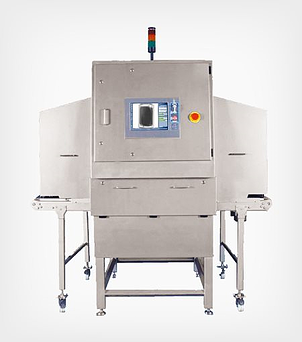 Food safety and quality assurance are fundamental elements of success in modern markets. A single food safety incident can tarnish a company’s reputation, driving away business and crippling operations.
Food safety and quality assurance are fundamental elements of success in modern markets. A single food safety incident can tarnish a company’s reputation, driving away business and crippling operations.
Recovering from a food safety incident is a long arduous process, and some companies can be driven to dissolution from the fallout of a single event.
To avoid this problem, every business in the food manufacturing industry needs a top-notch food quality assurance program to eliminate foodborne illness risks in the production chain. Food inspection equipment is a key part of any such quality control program. The challenge is picking the right inspection equipment for your production line.
Choosing the right food inspection device for your production line can mean the difference between effective QA processes that boost productivity and safety, and having to run damage control.
With this in mind, here are a few tips for picking a product inspection machine for your business:
Tip 1: Consider the Detection Capabilities of the Machine Against Your Biggest Contamination Risks
If your most common product contaminant risks are all non-metallic objects such as glass, rubber, rocks, or bones, then odds are that a dual energy X-ray system using material discrimination x-ray (MDX) will be the best option for spotting these contaminants.
Alternatively, if your most common risks for contaminants are very small, fine metal shavings, then a single energy X-ray inspection system and metal detector combo unit may be most effective.
Dual-energy x-ray (DEXA) inspection machines can provide the detection of a broad range of detectable contaminants, as well as the ability to perform multiple quality assurance tasks beyond simple contaminant detection, such as checking product weight, fat content (by chemical lean), seals, and more. This allows a single machine to replace the functions of several separate devices, saving time and money on the production line.
Carefully considering the capabilities of different product inspection tools compared to your biggest food safety risks as identified by your HACCP analysis can help you get the perfect machine for maximizing your QA process’ results.
These are just a few of the things that need to be considered when picking a food inspection machine for your quality assurance program.
Tip 2: Make Sure Your Inspection Machine is Compliant with FDA Standards
There’s not much point in adding any piece of automation to your production line if it isn’t compliant with the latest FDA standards for food sanitation and safety. This is especially true of food inspection machines such as x-ray and metal detection devices.
Check resources such as the Equipment Design Task Force’s (EDTF’s) Sanitary Equipment Design Principles Checklist to see if the equipment you’re adding meets all guidelines for sanitary equipment design.
Tip 3: Whenever Possible, Physically Inspect Machinery Before Making a Purchase Decision
It happens all the time: the equipment detailed in the product catalog has the perfect specs, and the design in the picture looks right. But, when the machine arrives, it has the wrong configuration for interfacing with your production line.
The materials might not be compatible with the rest of your production equipment, or the method by which it moves product might not work with the state of your product or packaging at that phase.
Checking the physical configuration and materials of your food inspection machine prior to purchase is a necessity for ensuring that it will work well with your quality assurance program.
Learn more about how you can find the best product inspection machine to meet your needs by contacting us today!




